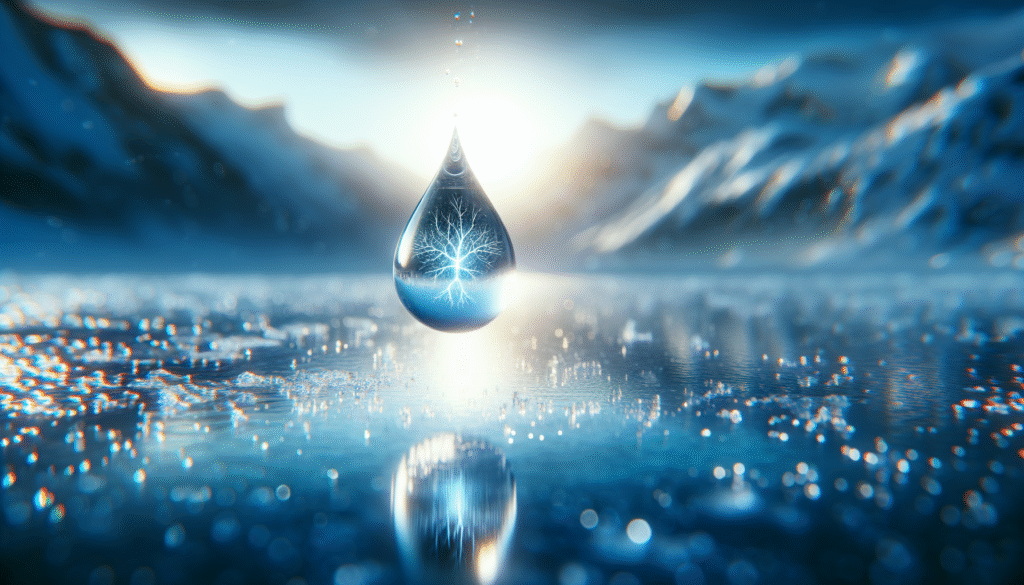Have you ever wondered why some people willingly plunge into icy waters while others shy away from the cold? The contrast isn’t just about personal preference; there’s a fascinating neurological process at play. Let’s talk about something that might surprise you: the connection between dopamine and cold water.

Understanding Dopamine
Dopamine is a neurotransmitter, a chemical messenger in your brain that plays a pivotal role in reward, motivation, and pleasure. When you engage in activities that you enjoy or that stimulate you, your brain releases dopamine, giving you that feel-good effect. But it’s not just about feeling good. Dopamine can also impact your mood, learning, attention, and even motor control.
The Role of Dopamine in Daily Life
Think about the last time you accomplished a goal or enjoyed a favorite meal. That boost of happiness? That was dopamine signaling to you that what you did was beneficial and enjoyable. You often chase that feeling, whether it’s through engaging in hobbies, socializing, or even enjoying a rich slice of chocolate cake.
Dopamine and Motivation
When it comes to motivation, dopamine has a big say. A little dopamine can nudge you to get out of bed or tackle your to-do list. But an imbalance can lead to issues like lack of motivation or even conditions like depression. Understanding how dopamine works in our everyday lives can offer insights into the complexities of human behavior.
The Science of Cold Water Exposure
Cold water exposure has recently gained traction in wellness circles, touted for its numerous health benefits. Many people swear by activities like cold showers, ice baths, or swimming in open water. But what’s really happening under those chilly circumstances?
Physiological Responses to Cold Water
When you expose your body to cold water, several physiological changes occur. Your heart rate might quicken, blood vessels constrict, and your body might go into a state of heightened alertness—all responses to what your body perceives as a stressful situation. Interestingly, this isn’t just discomfort. It can actually turn into a rewarding experience.
Table: Body’s Responses to Cold Water Exposure
| Response | Description |
|---|---|
| Increased heart rate | Your heart pumps faster to circulate blood. |
| Blood vessel constriction | Blood vessels tighten, redirecting blood to vital organs. |
| Heightened alertness | You become more aware, which can enhance focus. |
The Cold Shock Response
The initial reaction to cold water is often referred to as the “cold shock response.” It’s akin to your body saying, “Whoa, what’s happening?” In that moment, the release of stress hormones, including adrenaline, can lead to a surge of energy. It is during this response where dopamine can come into play, creating a reward from an initially uncomfortable experience.
Building Resilience Through Cold Exposure
Regular exposure to cold water can build resilience. That initial shock wears off, and your body adapts over time. As you repeatedly immerse yourself in cold water, you may find that it gets a little easier, and oddly enough, you might even start to enjoy it. The dopamine release you experience can give you a sense of accomplishment, further motivating you to seek out more of these chilly endeavors.
The Connection Between Dopamine and Cold Water
So, how does dopamine tie into cold water exposure? The relationship revolves around your nervous system and how you interpret stress. Here’s where things get interesting.
Cold Water as a Stressor
When you step into cold water, your body experiences a mild stressor. This stress signals your brain to release neurotransmitters, including dopamine. In this context, cold water exposure turns into a rewarding experience, as overcoming a challenge naturally encourages dopamine release.
The Pleasure Principle
With each cold plunge, not only are you facing discomfort, but you’re also tapping into the pleasure principle—the psychological theory that humans are driven by the pursuit of pleasure and the avoidance of pain. The initial shock may be startling, but as your body adapts to the cold, you may find yourself craving that feeling. It’s a cycle of pain and pleasure intertwined with dopamine, leaving you wanting more.
Enhanced Mental Health
Studies have shown that regular cold exposure may also lead to improved mental health. The dopamine surge can elevate mood and potentially reduce symptoms of anxiety and depression. Simply put, exposure to cold water isn’t just thrilling; it can also be therapeutic.
Practical Ways to Incorporate Cold Water Exposure
If you’re intrigued by the idea of reaping the benefits of cold water and dopamine, how do you get started? Below are some practical ways to ease into this experience.
Ice Baths
Many athletes swear by ice baths for recovery. Submerging yourself in icy water can reduce inflammation and muscle soreness, all the while triggering a dopamine release. Start with just a few minutes, and gradually increase your exposure time as you acclimate to the cold.
Cold Showers
If the thought of submerging in ice seems too extreme, why not try a cold shower? Start with your usual warm shower and switch to cold for the last 30 seconds. This simple shift can still activate the dopamine response without the extreme conditions of an ice bath.
Outdoor Swimming
If you’re near a body of water, consider outdoor swimming in the colder months. The experience of nature combined with cold water exposure can amplify the positive effects on your mood while being refreshing. Just remember, safety first—be aware of water temperatures and your own limits.

The Psychological Impact of Cold Water
The influence of cold water on your mind is profound. It’s not just about the dopamine; it’s also about the mental toughness you develop. Everyone has different thresholds for what feels cold or uncomfortable, but pushing those limits can reveal much about your own resilience and courage.
Overcoming Fear and Anxiety
Often, the thought of facing cold water is daunting. But when you conquer that fear, your brain rewards you with dopamine, creating a positive feedback loop. With each cold plunge, you may find yourself growing braver, more confident, and better at tackling other fears in life.
Building a Mindfulness Practice
Incorporating cold water exposure into a mindfulness practice can be transformative. As you immerse yourself in cold water, focus on your breath and the sensations throughout your body. This mindfulness can enhance the dopamine rush and help you cultivate a greater sense of presence and awareness—a form of meditation in motion.
The Science Behind Dopamine Release
Understanding dopamine’s role in cold water is not complete without exploring how your body’s chemistry works in tandem with the cold.
How Cold Water Stimulates Dopamine
When your body experiences cold water, it goes through several chemical reactions. This includes the release of endorphins, known as your body’s natural painkillers. As endorphins flood your system, they can not only relieve discomfort but also create a euphoric feeling akin to a natural high—often accompanied by dopamine release.
Adapting to Cold and Dopamine Levels
It’s essential to recognize that as you adapt to cold exposure, your dopamine levels may change. Regular exposure can increase the efficiency of dopamine receptors in your brain, leading to a heightened state of well-being and motivation over time.
Why Some People Love It More Than Others
Some people have a natural inclination toward cold-water activities, thanks to genetic differences that affect neurotransmitter receptors. Others might take longer to appreciate the experience. Don’t feel disheartened if your first few exposures don’t give you the blissful feeling that others describe; it could take time to adjust.

Case Studies and Real-World Examples
Real-life stories can illuminate the fascinating relationship between cold water exposure and dopamine.
Athletes and Cold Water Therapy
Many elite athletes have adopted cold water therapy as part of their training regimen. They report not only physical recovery benefits but cognitive boosts, thanks to the dopamine that surges through them after exposure. For them, it’s about optimized performance and mental clarity.
Everyday Adventurers
You might find stories of everyday people transforming their lives by searching for cold water immersion. Whether it’s through polar bear swims or chilly morning showers, each person often emerges with a renewed sense of vigor and positivity—a testament to the neurological effects of cold water.
Safety Considerations
While the idea of cold exposure can sound enticing, you must prioritize safety. Cold water can shock your body, so it’s crucial to approach it with caution.
Recognizing Your Limits
Everyone has different tolerances for cold. Pay attention to how your body reacts. If you start feeling overly uncomfortable, it’s essential to exit the water and warm up.
Gradual Exposure
For those new to cold water immersion, starting with short intervals is wise. Allocate just a few seconds, then gradually work up to longer stints as your body becomes accustomed to the chilly temperatures.
Health Considerations
If you have health concerns—such as heart issues—or conditions like Raynaud’s syndrome, consult a medical professional before diving into cold water practices.

Conclusion: The Enduring Effects of Cold Water and Dopamine
Reflect on this: embracing cold water isn’t merely about discomfort; it’s about finding resilience, joy, and a boost in your happiness levels through dopamine. Whether you’re jumping into an ice bath or just switching your shower to cold, the potential benefits are immense.
As you consider trying cold water exposure, remember the remarkable connection between it and dopamine. You may find that pushing through discomfort brings profound rewards, both in physical health and mental wellbeing. Additionally, the integration of cold water practices can lead to a lifestyle characterized by greater awareness and resilience.
Now, are you ready to take the plunge?

